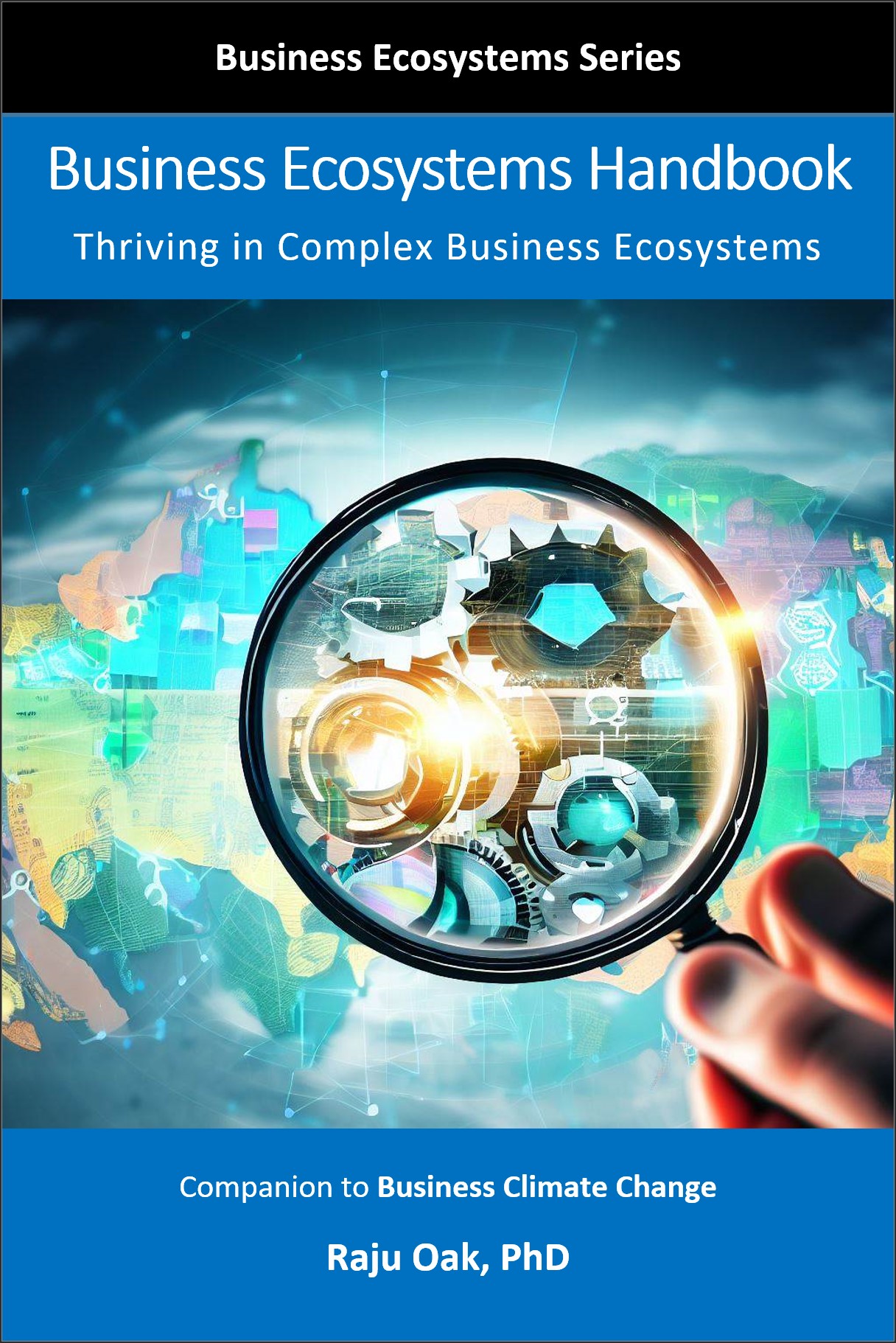This book is the essential handbook to navigating the complexities of modern business ecosystems. Designed for leaders and decision-makers, this handbook delivers actionable strategies for understanding and engaging with interconnected ecosystems that span industries and geographies. From strategic thinking and systems thinking to leadership development and stakeholder management, this resource combines theoretical depth with practical tools. Gain a holistic understanding of how to analyse, adapt, and excel in a world of increasing complexity and interconnectedness. Whether you aim to sustain competitive advantage or guide your organization towards new horizons, this handbook is your roadmap to success. Ideal as a standalone read or as a companion to "Business Climate Change."

A Quick Look
The "Business Ecosystems Handbook" serves as a comprehensive guide for leaders, executives, and decision-makers navigating the complexities of today's fast-paced and interconnected business environment. The handbook is designed to offer actionable insights into understanding and successfully engaging with diverse ecosystems that businesses are part of or interact with.
Core Concepts of Business Ecosystems
At its core, the book explores the concept of a business ecosystem, which is no longer confined to a single industry but spans across multiple sectors and even geographies. It delves into how businesses are no longer isolated entities but are nodes in larger networks that include competitors, suppliers, regulators, and even customers. It underscores the critical importance of recognizing the non-linear impacts of growing complexity on a firm's operations and strategic objectives.
Strategic Thinking in Business Ecosystems
One of the primary focuses of the handbook is on strategic thinking in these intricate ecosystems. This includes understanding how to analyse, model, and implement growth strategies that consider the interconnectedness of various elements. It brings to light the need for leaders to adopt systems thinking as they contemplate their business models, culture, and operational strategies.
Managing in Business Ecosystems
The book further dives into the technical aspects of managing within these ecosystems, covering topics such as business process strategy and management. Here, it elucidates how value chains are becoming value networks and the implications of this shift on operational excellence. In addition, it sheds light on the importance of adapting to and implementing technological advancements, emphasizing the role of information architecture and IT strategy in the business ecosystem.
While strategies and processes are essential, the handbook also highlights the softer elements like stakeholder management, team building, and effective communication. It introduces eclectic models that address these often overlooked, yet crucial aspects of business management. A strong emphasis is placed on the role of leadership in navigating an organization through the maze of ecosystem complexity. This section of the handbook offers tools and techniques to develop a broader, more flexible leadership style that is adaptive to change and capable of guiding a team through ambiguity.
In an era of constant change fuelled by technological advances, market volatility, and evolving consumer preferences, the handbook offers a holistic view of how to maintain competitive advantage. It elucidates how a firm cannot just survive but thrive by aligning its own objectives and operations with those of its surrounding ecosystem.
Overall, the "Business Ecosystems Handbook" is a valuable resource that combines theoretical frameworks with practical guidelines. It aims to equip its readers with the knowledge and skills needed to excel in a complex, interconnected world, making it a must-read for those committed to steering their organizations toward sustainable growth and success.

